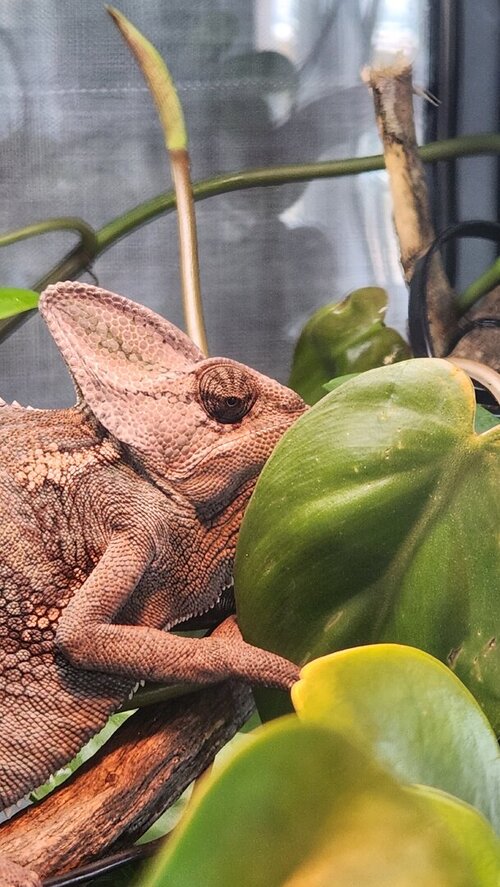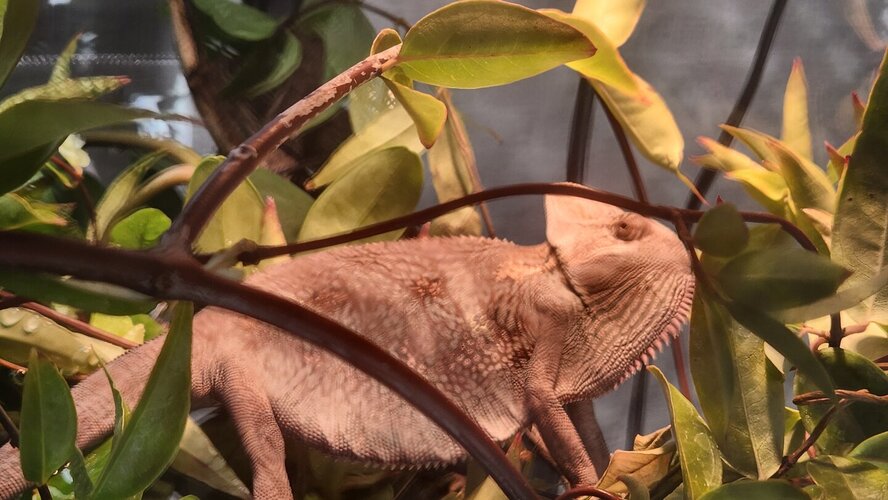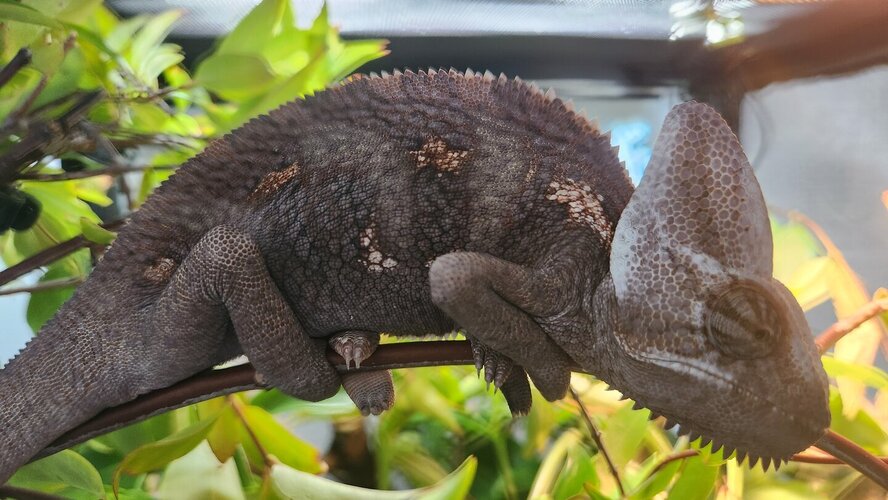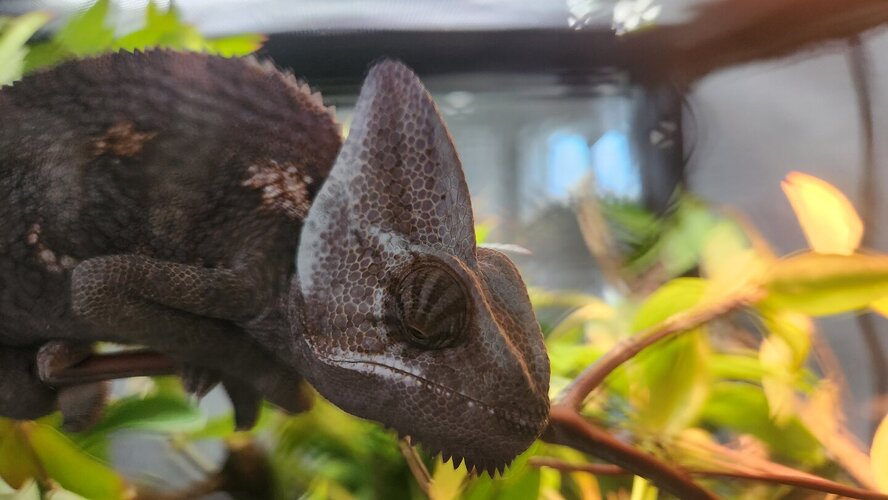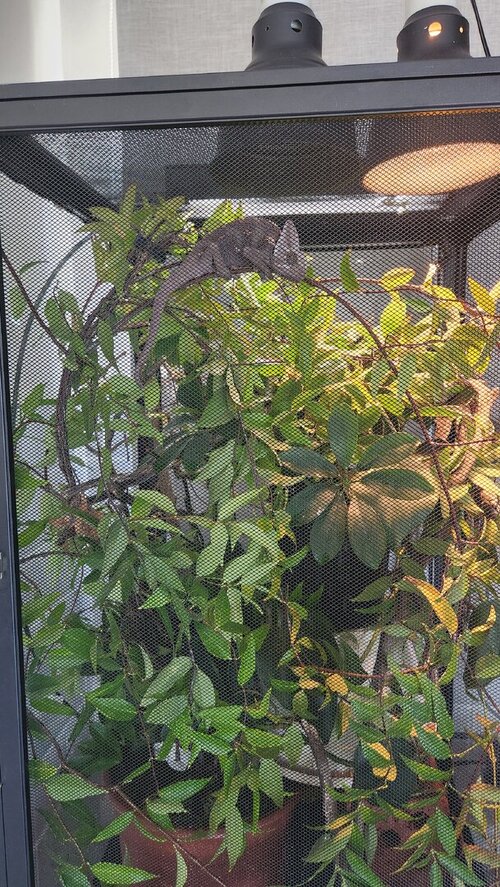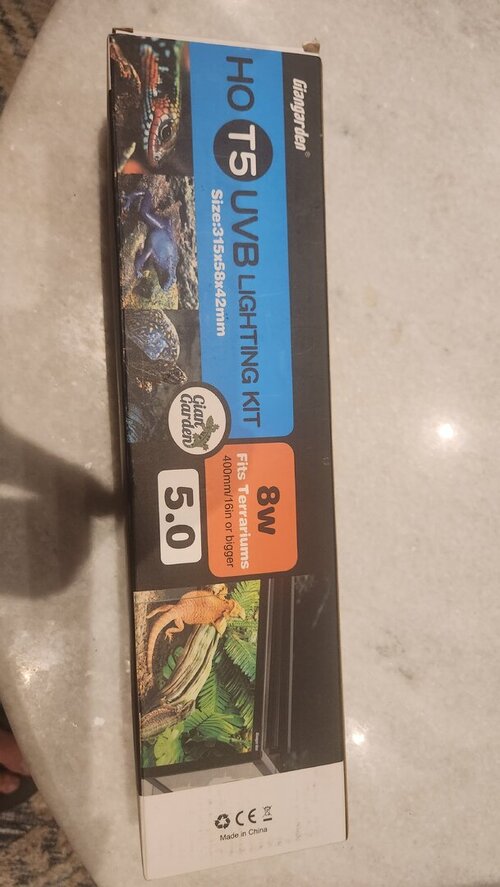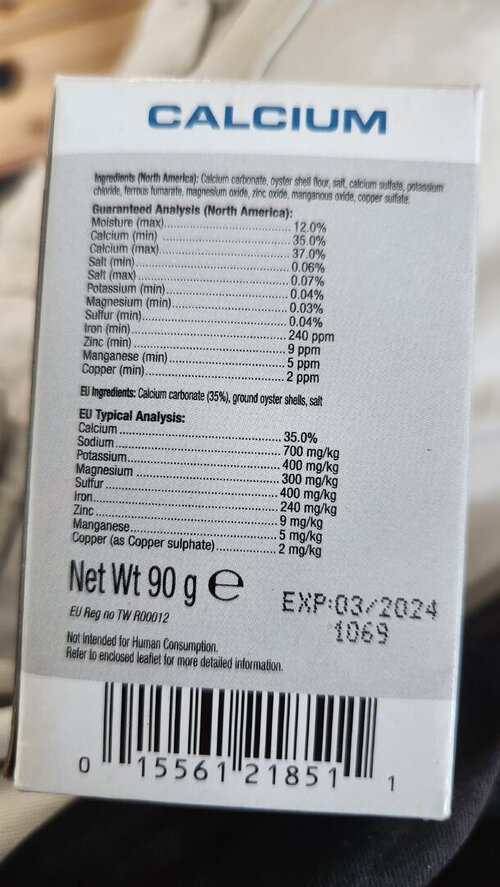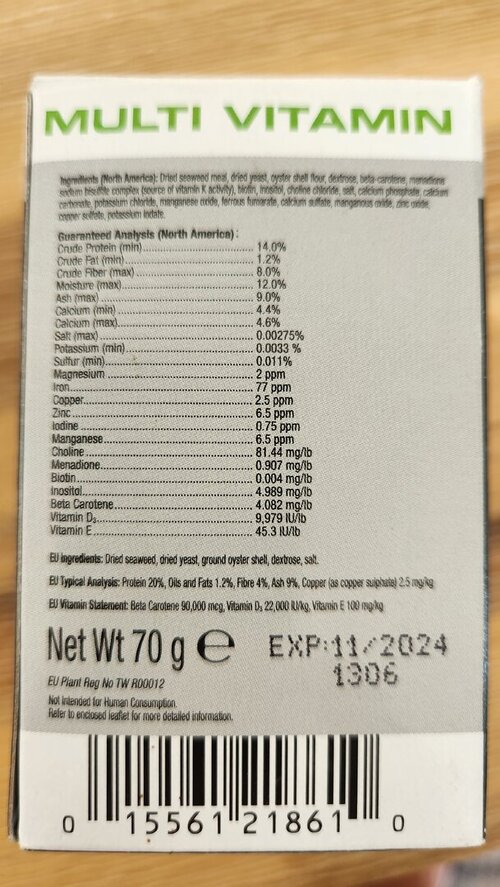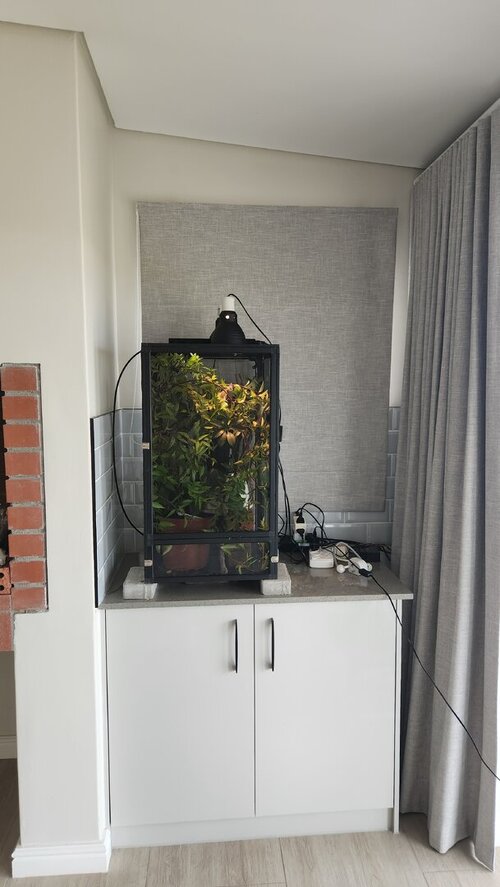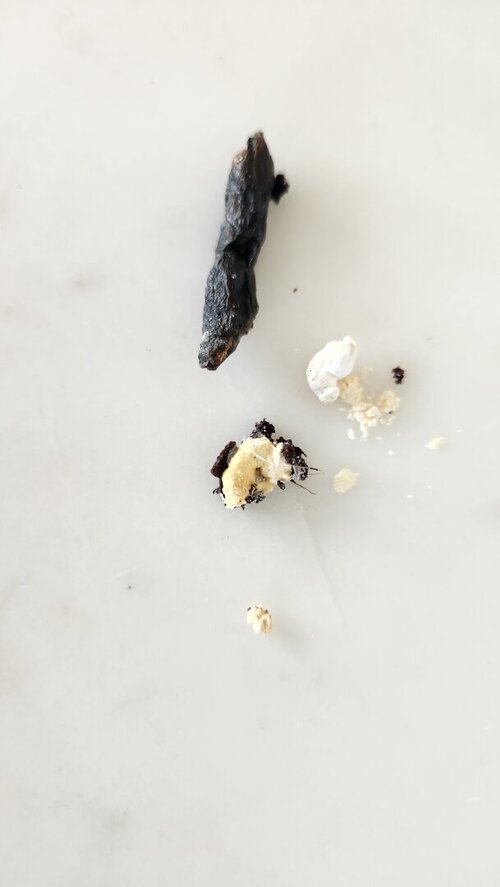Lollipopwatson
New Member
Hi.
I am new at this and am a bit concerned. We have had Lollipop, a male Vailed Chameleon, for 3 weeks. He is eating very well, about 6 to 8 Dubai and 5 crickets every 2 to 3 days. I dust his food every time I feed him with Exoterra calcium and multi vitamin. He gets misted 4 times a day. His day time temp 27 degrees c night time about 19 degrees c. He is less likely to hide now when we come to the cage. But he is always brownish colour. First thing in the morning he is Grey's with nice greens, then changes. Please take a look at pics and give me some advice. PS his head is also very white.
Regards Chris from South Africa.
I am new at this and am a bit concerned. We have had Lollipop, a male Vailed Chameleon, for 3 weeks. He is eating very well, about 6 to 8 Dubai and 5 crickets every 2 to 3 days. I dust his food every time I feed him with Exoterra calcium and multi vitamin. He gets misted 4 times a day. His day time temp 27 degrees c night time about 19 degrees c. He is less likely to hide now when we come to the cage. But he is always brownish colour. First thing in the morning he is Grey's with nice greens, then changes. Please take a look at pics and give me some advice. PS his head is also very white.
Regards Chris from South Africa.

